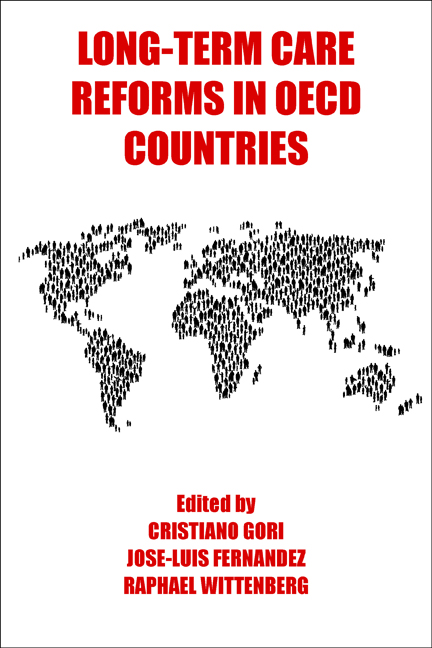Thirteen - Conclusion: looking ahead in long-term care policies
Published online by Cambridge University Press: 19 August 2022
Summary
The previous chapters have examined a range of strategies across OECD countries for organising, regulating and funding long-term care (LTC) public services for dependent older people in the face of the rising needs of ageing societies. These chapters have highlighted the main LTC models and reforms adopted internationally, provided a critical assessment of their successes and limitations, and drawn key recommendations for future policies. This concluding chapter reviews their findings in order to map and discuss the most important challenges and dilemmas that LTC policies will face in the years to come.
Rising demand
Future policies must take account of the expected rise in demand for LTC for older people. Chapter Two, by Wittenberg, shows that demand for LTC is expected to rise throughout the developed and developing world. The number of older people needing care is projected to rise partly because the large post- Second World War baby boom cohorts are starting to reach old age, and partly because increasing life expectancy means that a rising proportion of older people are surviving into late old age.
The growth in demand for formal LTC is a complex issue which requires careful consideration. Need for care is not determined simply by age. Much will depend on whether there is a compression or expansion of disability, that is, whether, as total life expectancy increases, the number of years with severe disability remains constant, rises or falls. The issue of the compression or expansion of disability is the subject of much continuing debate. It would not seem prudent for policymakers to count on future reductions in the prevalence of severe disability among older people to offset the rising demand for LTC that will result from population ageing. An expansion of severe disability, including dementia-related disability, cannot be excluded.
Demand for care services is not solely a function of the numbers needing care. It also depends on the availability of alternatives to services, the cost of care services, incomes, and expectations and preferences. The main alternative to formal care services is unpaid care by family and friends. Uncertainty about future supply of unpaid care, as discussed in the next section, could have a major upward impact on demand for formal services.
- Type
- Chapter
- Information
- Long-Term Care Reforms in OECD CountriesSuccesses and failures, pp. 293 - 306Publisher: Bristol University PressPrint publication year: 2015

